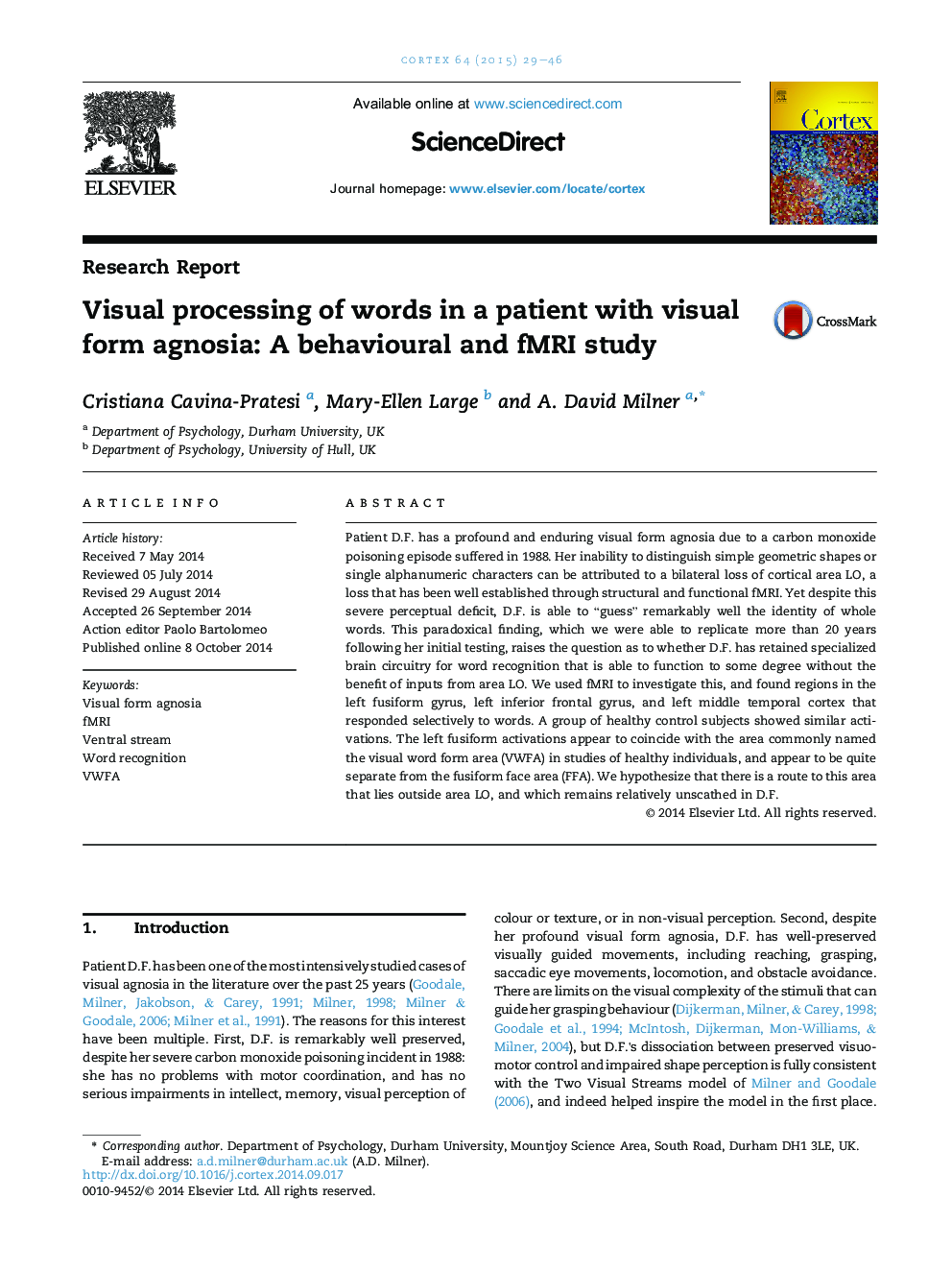| Article ID | Journal | Published Year | Pages | File Type |
|---|---|---|---|---|
| 7314784 | Cortex | 2015 | 18 Pages |
Abstract
Patient D.F. has a profound and enduring visual form agnosia due to a carbon monoxide poisoning episode suffered in 1988. Her inability to distinguish simple geometric shapes or single alphanumeric characters can be attributed to a bilateral loss of cortical area LO, a loss that has been well established through structural and functional fMRI. Yet despite this severe perceptual deficit, D.F. is able to “guess” remarkably well the identity of whole words. This paradoxical finding, which we were able to replicate more than 20 years following her initial testing, raises the question as to whether D.F. has retained specialized brain circuitry for word recognition that is able to function to some degree without the benefit of inputs from area LO. We used fMRI to investigate this, and found regions in the left fusiform gyrus, left inferior frontal gyrus, and left middle temporal cortex that responded selectively to words. A group of healthy control subjects showed similar activations. The left fusiform activations appear to coincide with the area commonly named the visual word form area (VWFA) in studies of healthy individuals, and appear to be quite separate from the fusiform face area (FFA). We hypothesize that there is a route to this area that lies outside area LO, and which remains relatively unscathed in D.F.
Related Topics
Life Sciences
Neuroscience
Behavioral Neuroscience
Authors
Cristiana Cavina-Pratesi, Mary-Ellen Large, A. David Milner,
